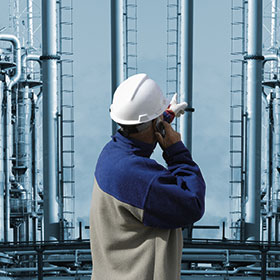

It has been some 15 years since the introduction of the Functional Safety Management standards of IEC 61508 and 61511, with most international organisations and operating facilities now fully up to speed on the implementation of these safety standards. They allow a more flexible approach in assessing the protection requirements based on applicable risk, as opposed to the previous prescriptive standards of the past and allow the safety design review team to determine ‘how safe is safe’. The functional safety management covers a number of steps or phases during the project execution, which are described in the Functional Safety Lifecycle Model. This technical abstract briefly describes some of these phases applicable to hazard analysis and SIL determination.
HAZOP study
The HAZOP and SIL review timing is important so as to limit the amount of possible design rework, and will normally be conducted prior to the project detailed engineering design phase. The primary objective of a HAZOP is to identify hazardous deviations from design intent in the process itself or associated process equipment and operability, then recommend corrective actions by a team of knowledgeable persons of different disciplines. An Alarm Rationalisation review is also required to confirm if all alarms are necessary and to assign alarm prioritisation, it is also important to reduce operator ‘alarm floods’ during process upsets by various suppression methods.
SIL assignment
To determine just how much applicable safety design is required to be applied, a Safety Integrity Level (SIL) is determined, preferably as part of the HAZOP, which is in relation to the perceived risk of probable frequency of a dangerous event occurring (protection demand) and its likely or credible consequence. There are four SIL grades or requirements based on the average probability of failure on demand (PFDavg), i.e. safety availability or failure rate per hour, and each level increases by one order of magnitude which is indicated by the Risk Reduction Factor (RRF). SIL 1 is the lowest and most common, with SIL 4 being the highest and rarely seen in the normal process industries. The SIL Review is a risk assignment in a structured sequence to determine the required SIL for a specific safety application, and if a SIF is needed to form part of this protection. We need to address three variable attributes in a SIL assignment, these are personnel safety, the environment and financial loss, and the highest SIL applicable to these three will be used to design the safety protection required and any applicable SIF. The results are determined using a Risk Graph calibrated to match a client’s or facility owner’s specific risk aversion.
SIL assessment
For each SIF, a Safety Requirements Specification (SRS) needs to be developed to ensure that the SIF meets the overall SIS design requirements and enables the SIS ESD engineering contractor and safety system supplier to configure the SIFs. Once the SIF/SIL requirements have been determined, each SIF loop, which includes the sensor or transmitter, logic solver and the final element, must be evaluated to ensure that the design meets the required SIL. This involves some complex calculations based on the SIF architecture and requires all SIF loop component failure data to be entered.
Installation and operation
Following the SIS design and procurement, one of the most important phases is the Factory Acceptance Test (FAT), where each SIF is fully tested and documented using the SIF SRS and associated functional logic diagrams. All sensor input ranges and trip alarm settings are checked together with communications to the DCS operator displays. Once delivered to site, this is followed by a Site Acceptance Test (SAT) consisting of full loop simulation. It is the author’s opinion that in general, the largest risk to plant and personnel is not with the initial safety systems design, but with the operating company and how well they manage and maintain their installed safety systems.
Interested readers can download the full paper at http://instrumentation.co.za/+J887
For more information contact RJ (Dick) Perry, +27 (0)83 641 0799, [email protected]
© Technews Publishing (Pty) Ltd | All Rights Reserved